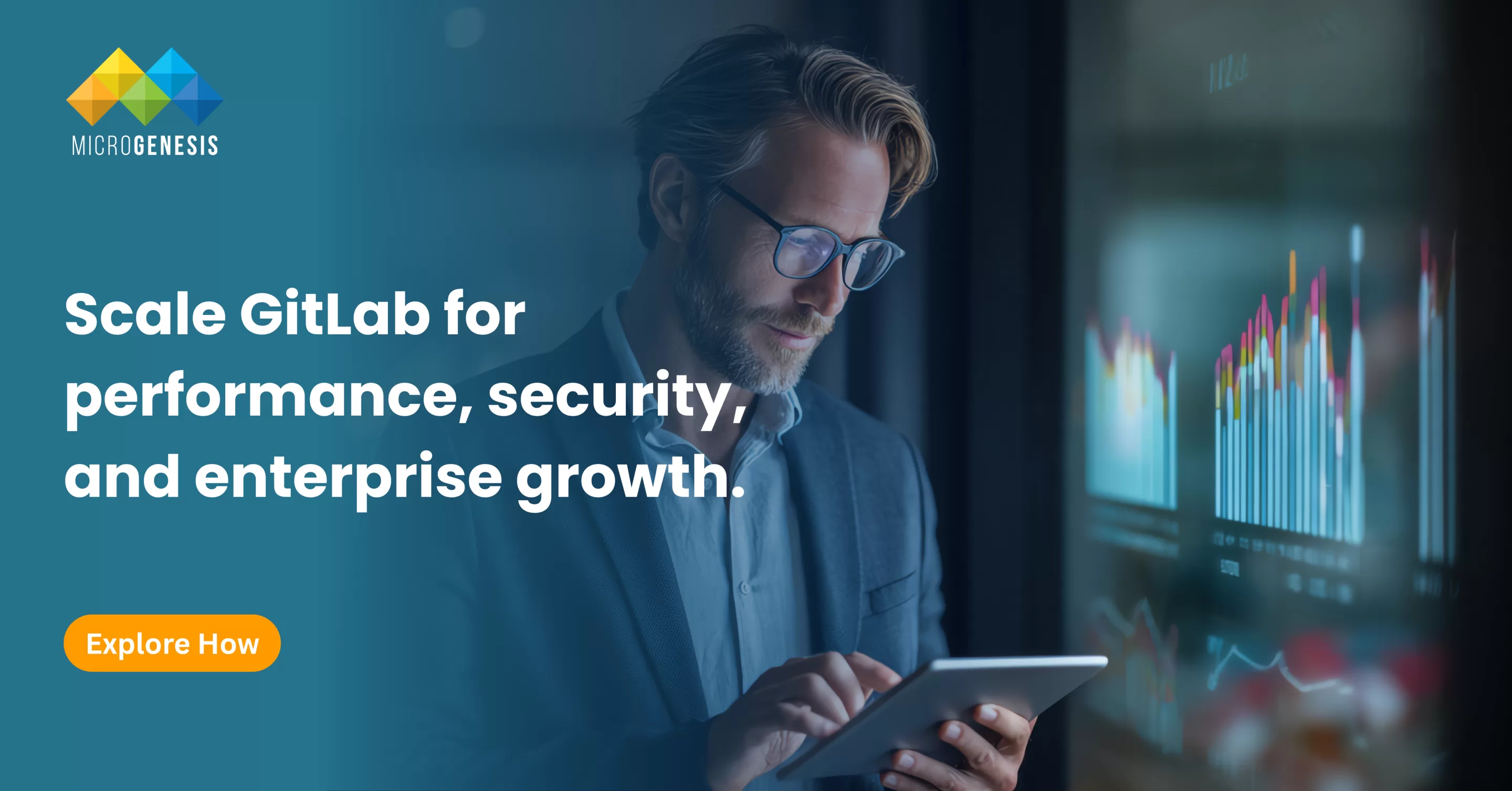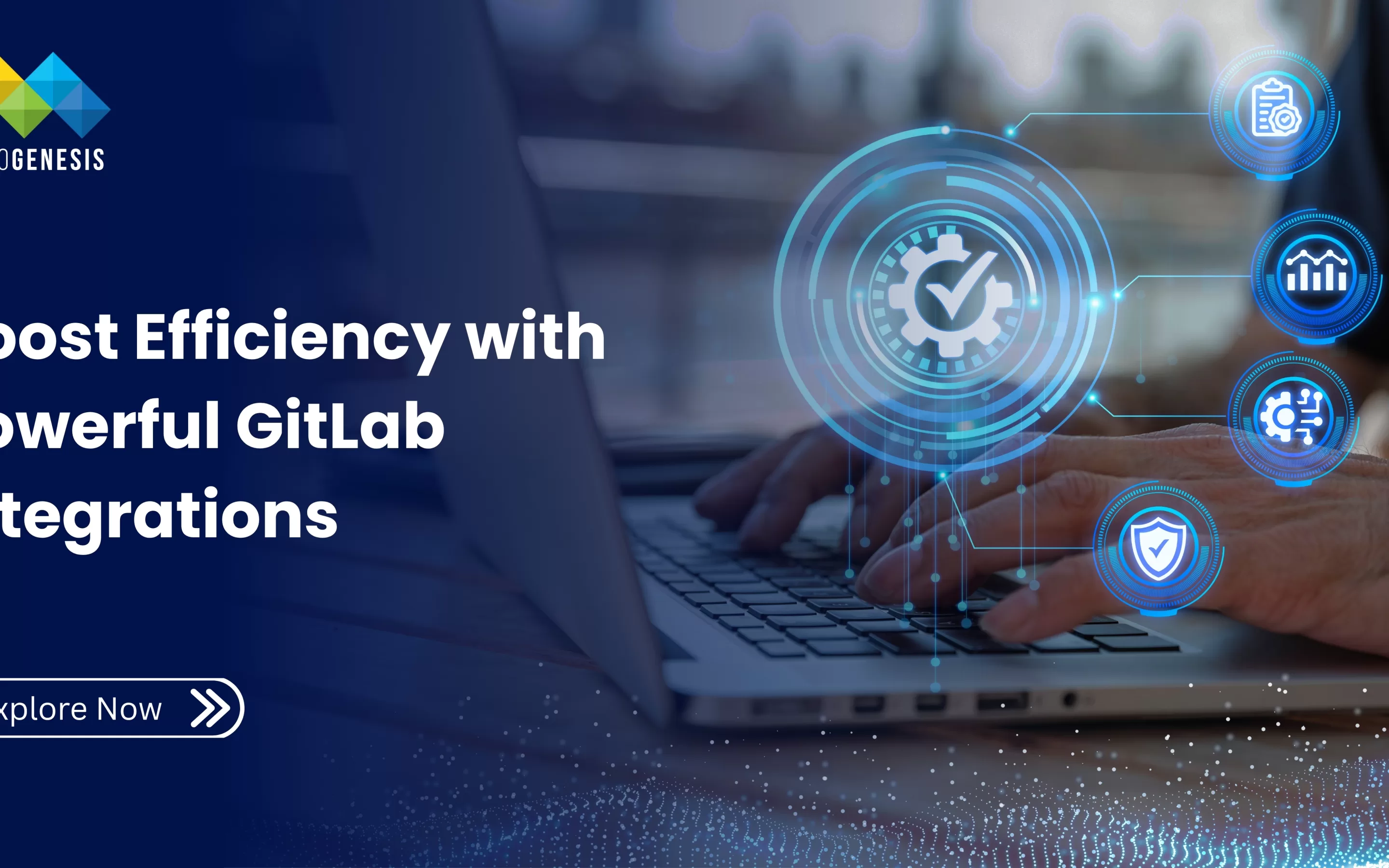As enterprises evolve into digital-first organizations, their software delivery needs grow exponentially. More users, larger repositories, complex compliance requirements, and global distributed teams demand platforms that are scalable, resilient, and efficient.
GitLab, originally known as a collaborative Git-based development tool, has transformed into an enterprise-grade DevSecOps platform that can scale across thousands of developers, projects, and environments — all while maintaining governance, security, and performance.
However, scaling GitLab in an enterprise context is not just about adding more hardware. It requires thoughtful architecture design, performance optimization, governance frameworks, and operational maturity.
This article explores the strategies, best practices, and technologies that enable GitLab to perform reliably at enterprise scale — ensuring teams maintain velocity, visibility, and security without compromise.
1. The Challenge of Scaling DevOps in the Enterprise
1.1 The Growth of Enterprise Complexity
As organizations mature digitally, they experience growth across multiple dimensions:
- Users: From a few dozen to tens of thousands of developers, QA, and security engineers.
- Projects: Hundreds or thousands of microservices, libraries, and APIs.
- Pipelines: Thousands of concurrent CI/CD jobs requiring orchestration.
- Compliance: Stricter audit and reporting requirements.
Scaling DevOps is no longer about speed alone — it’s about ensuring performance, traceability, and governance at scale. Partnering with a trusted DevOps service provider helps enterprises implement scalable frameworks, strengthen governance, and maintain efficiency as they expand their DevOps ecosystems.
1.2 The GitLab Advantage
Unlike siloed DevOps toolchains (Jenkins, Jira, GitHub, etc.), GitLab unifies all lifecycle stages — code, build, security, deploy, and monitor — into a single platform. This consolidation dramatically simplifies scalability:
- Fewer integration points
- Unified access control
- Centralized monitoring
- Reduced maintenance overhead
Enterprises leveraging GitLab benefit from simpler scalability paths, as all core functions (CI/CD, SCM, security, and analytics) operate under a unified architecture.
2. GitLab Architecture Overview
2.1 Monolithic vs. Distributed Architecture
GitLab supports two main deployment architectures:
- Monolithic: A single instance managing Git, CI/CD, and web services — ideal for small to medium deployments.
- Distributed / Scaled: Uses GitLab Geo and Horizontal Scaling (HA) for large organizations needing high performance, redundancy, and multi-region collaboration.
In an enterprise setup, distributed architecture is essential for:
- High availability (HA)
- Fault tolerance
- Load balancing across nodes
- Regional replication
2.2 Core Components
GitLab’s architecture is modular. Key components include:
- Git Repositories: Store source code and version history.
- Gitaly: Manages repository access and scaling for Git operations.
- Redis: Provides caching and job queueing.
- PostgreSQL: Handles database operations.
- NGINX / Puma: Serves web requests and APIs.
- Runners: Execute CI/CD jobs across distributed compute resources.
- Prometheus & Grafana: Enable monitoring and metrics visualization.
This modularity allows independent scaling — for example, adding more runners or Gitaly nodes without downtime.
2.3 Horizontal and Vertical Scaling
- Vertical Scaling: Increasing CPU, memory, or disk capacity of servers. Suitable for mid-size instances.
- Horizontal Scaling: Adding more nodes or clusters to distribute load. Necessary for large enterprises running thousands of pipelines concurrently.
Example:
A global retail enterprise scaled GitLab horizontally across 12 nodes, using Geo replication for Europe, Asia, and the U.S. The result — a 70% improvement in CI/CD throughput and near-zero downtime.
3. High Availability (HA) and Disaster Recovery
3.1 High Availability Configuration
Enterprises can achieve high availability through:
- Load Balancers: Distribute traffic across application servers.
- HAProxy or NGINX: Ensure failover routing.
- Database Replication (Patroni for PostgreSQL): Maintain standby replicas for instant failover.
- Redis Sentinel: Monitors and manages Redis master/slave failovers.
This ensures GitLab remains operational even during hardware or network failures.
3.2 Disaster Recovery and GitLab Geo
GitLab Geo replicates repositories, CI/CD artifacts, and metadata across geographically distributed instances.
Benefits include:
- Local access for global teams (reduced latency).
- Seamless failover in case of outages.
- Compliance with data residency laws (e.g., GDPR).
Example: A European automotive company used GitLab Geo to maintain compliance by hosting EU data locally while providing mirrored access for global engineers.
4. Scaling GitLab CI/CD Performance
4.1 Optimize Runners
GitLab Runners are the backbone of CI/CD scalability. Best practices include:
- Autoscaling Runners: Use cloud-based runners (AWS, Azure, GCP) that scale automatically based on job demand.
- Dedicated Runners: Assign specific runners for high-priority or security-sensitive projects.
- Runner Caching: Use shared caching to reduce rebuild times.
Example:
A telecom provider deployed Kubernetes-based autoscaling runners, reducing CI/CD queue times by 60%.
4.2 Optimize Pipeline Design
Efficient pipelines improve performance and reduce infrastructure load:
- Use parallel jobs to execute tests simultaneously.
- Implement conditional logic (rules:) to skip unnecessary jobs.
- Reuse artifacts between stages.
- Introduce parent-child pipelines for modularity.
Enterprises using these strategies report 30–50% faster build times.
4.3 Utilize Pipeline Analytics
GitLab provides metrics such as:
- Pipeline duration
- Job success rate
- Failure trends
Analyzing these KPIs helps identify bottlenecks and optimize runner allocation, test coverage, and cache efficiency.
5. Governance, Compliance, and Access Control
5.1 Role-Based Access Control (RBAC)
Enterprises often manage thousands of users and repositories. GitLab’s RBAC allows fine-grained control:
- Developer: Commit and merge.
- Maintainer: Manage settings and pipelines.
- Owner: Full administrative control.
RBAC ensures security and prevents unauthorized changes.
5.2 Group-Level Policy Enforcement
GitLab enables hierarchical group management, allowing admins to apply global policies:
- Mandatory code reviews
- Approval thresholds
- Enforced security scans
Example: A financial enterprise mandated dual approvals for all production deployments using group-level policies, satisfying SOX compliance.
5.3 Audit Logging and Traceability
GitLab’s audit events capture all key actions — commits, pipeline runs, access changes. Logs can be exported to SIEM tools (Splunk, ELK) for centralized monitoring.
This provides complete traceability required for ISO, SOC 2, and PCI-DSS compliance.
6. Observability and Monitoring at Scale
6.1 GitLab Native Monitoring
GitLab integrates with Prometheus to provide built-in metrics:
- CPU and memory usage
- CI/CD job performance
- Runner activity
These metrics are visualized in Grafana dashboards for real-time health checks.
6.2 External Monitoring Integrations
Enterprises can connect GitLab to:
- Datadog: For application performance and error tracking.
- New Relic: For end-to-end observability of GitLab environments.
- PagerDuty: For automated incident alerts and escalation.
Integrating observability ensures proactive management of performance and uptime.
6.3 Log Management and Compliance Reporting
Logs from GitLab components can be centralized using ELK (Elasticsearch, Logstash, Kibana). This facilitates:
- Faster troubleshooting
- Forensic analysis
- Automated compliance report generation
7. Scaling for Security and Compliance
7.1 Enterprise Security Controls
GitLab provides enterprise-grade security features:
- SAML / LDAP Integration: Centralized authentication.
- 2FA & Single Sign-On (SSO): Enforces secure access.
- Encrypted Backups & Secrets: Protect sensitive data.
- Vulnerability Scanning: Built-in SAST, DAST, and container scans.
These capabilities ensure scalability without compromising compliance.
7.2 Policy-as-Code Governance
With Policy-as-Code, admins define governance rules in YAML:
approvals:
required: 2
security_scans:
sast: true
dependency: true
This ensures consistency across thousands of pipelines — automating compliance enforcement.
7.3 Data Residency and Regulatory Alignment
Using GitLab Geo, enterprises can deploy instances in multiple regions to comply with local data residency laws.
Example:
A government agency deployed GitLab across three sovereign data centers, ensuring compliance with regional privacy mandates.
8. Cost Optimization and Resource Management
8.1 Autoscaling and Resource Allocation
Autoscaling runners prevent overprovisioning by dynamically adjusting resources. Enterprises can define usage limits and quotas for each group or project.
8.2 License Management
GitLab’s seat-based licensing simplifies budgeting. Admins can monitor license utilization through dashboards and reallocate seats to optimize costs.
8.3 Cloud vs. On-Premises Deployment
- Self-Managed: Greater control, compliance flexibility, but higher maintenance overhead.
- GitLab SaaS: Fully managed, scalable, and continuously updated.
Enterprises often adopt a hybrid model — sensitive workloads on-premises, general workloads on SaaS.
Read more: 5 Best Practices for Building a Strong DevOps Culture
9. Case Studies: GitLab Scaling in Action
9.1 Global Automotive Manufacturer
Challenge: Thousands of engineers across 15 regions needed unified DevSecOps pipelines.
Solution: Multi-instance GitLab deployment with Geo replication and centralized policy management.
Result:
- 65% faster builds
- 40% fewer merge conflicts
- Compliance reports generated in minutes
9.2 Financial Institution
Challenge: Strict SOX and PCI-DSS compliance with limited visibility.
Solution: GitLab HA setup with audit trails and automated SAST/DAST pipelines.
Result:
- 100% compliance readiness
- 50% reduction in release time
- Complete CI/CD traceability
9.3 SaaS Provider
Challenge: Frequent outages due to pipeline overloads.
Solution: Kubernetes autoscaling runners and pipeline optimization.
Result:
- 70% reduced queue times
- 30% lower cloud costs
10. The Future of Enterprise GitLab Scaling
10.1 AI-Driven Optimization
GitLab’s AI capabilities (GitLab Duo) will automatically analyze pipeline data, suggest optimizations, and detect performance anomalies.
10.2 Self-Healing Infrastructure
Future releases will introduce self-recovering runners and nodes capable of detecting failure patterns and auto-reconfiguring to maintain uptime.
10.3 Unified Observability Layer
GitLab’s roadmap includes tighter integration with observability tools, providing a single-pane-of-glass view for DevOps and IT operations. These advancements strengthen DevOps solutions by enhancing visibility, performance monitoring, and proactive issue resolution across the entire software delivery pipeline.
10.4 Multi-Tenant GitLab Instances
Enterprises will soon leverage multi-tenant capabilities for internal teams — enabling shared resources while maintaining isolated governance and billing.
Conclusion
Scaling GitLab for the enterprise is not merely about managing bigger workloads — it’s about building a robust, compliant, and high-performance DevSecOps ecosystem that empowers teams to deliver at a global scale.
With MicroGenesis, a leading software solutions company, enterprises can leverage distributed architecture, high availability, Policy-as-Code governance, and intelligent automation to ensure their GitLab deployments remain secure, efficient, and adaptable — driving continuous innovation and scalability.
With support from GitLab Consulting Partners, organizations gain expert guidance on infrastructure architecture, optimization, and governance — turning GitLab into a strategic enabler of innovation, not just a development tool.
The result:
A scalable, compliant, and future-ready DevSecOps platform that unites people, processes, and technology — driving digital transformation across the enterprise.




